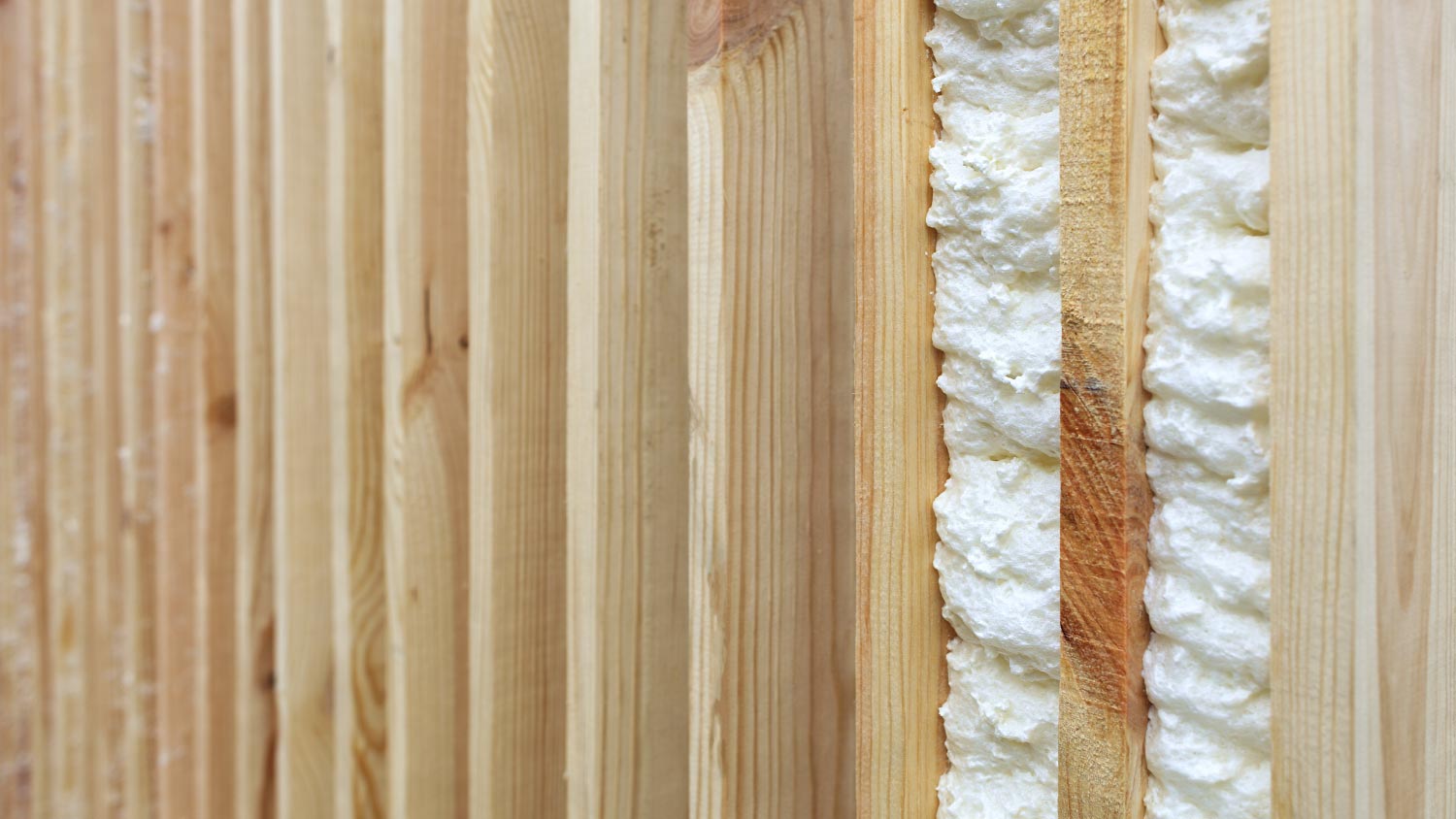
The cost to insulate a basement varies based on materials, size, and other factors, as well as how much of the work you wish to perform yourself.
Soybeans aren’t just food—they have some major benefits for insulating your home, too


Soybean foam insulation is both soy- and petroleum-based.
It is sprayed on and expands into gaps and crevices.
The benefits of this product include superior insulation, better moisture resistance, and less toxic chemicals.
The downsides of soybean insulation include higher expense and a general need for a professional to install.
From soy milk to tofu, we all know about the nutritional benefits of soybeans—but as insulation for your home? Seriously?
Believe it or not, you can insulate your home with a special material made from soybean oil. Soy-based insulation doesn't contain dangerous chemicals, and its energy-saving characteristics are equal to better than batting insulation. But is it right for your home? Let's examine how this type of insulation works and when you should consider using it.

Soybean insulation is a type of foam that’s sprayed onto walls and other spaces to regulate the flow of heat inside your home. The material is kept in a tank, and once it is applied, it expands to 100 times its original size. The insulation expands into crevices and gaps and then hardens to form a protective barrier.
Although soybeans get the top billing, up to 85% of this product is petroleum-based. The material has its critics, who argue that calling it soybean foam is misleading due to the high percentage of petroleum. However, it does use less petroleum than other types of foams.
Soybean foam insulation has several key benefits that will make any homeowner happy.
While petroleum is the primary material in soybean foam insulation, soybeans make up a significant chunk of the material. Soybeans are a renewable resource that doesn’t negatively affect the environment, which makes it better than other types of insulation based entirely on petroleum or other materials.
However, the main environmental benefit may be in simply acting as better insulation. You won’t use as much energy with this type of insulation because it’s particularly effective compared to other insulation materials. It has a high R-value, which means it has superior energy-saving characteristics, and the insulation will save you money, too. That’s because the heat in your home can’t get out as easily, so your heater doesn’t have to expend as much energy to keep your home warm.
This type of insulation doesn’t contain formaldehyde, urea, hydrofluorocarbons, or other kinds of dangerous chemicals. Soy-based insulation’s chemical makeup makes it a lot safer to apply and have around the house than other types of insulation.
This type of insulation is particularly effective at repelling moisture, meaning it will help you avoid mold and fungus growth.
While soybean foam insulation has many significant benefits, don’t forget to consider the downsides.
The cost of insulation for most standard materials is about $0.50 per square foot to install, but spray foam insulation (soybean and other types) costs $1.50 to $3 per square foot. So you'll have to decide if the long-term benefits can overcome the high upfront cost of installation.
Soybean spray foam insulation is more expensive because of its materials: petroleum and soybeans. Simply put, traditional materials like fiberglass and cellulose are cheaper, but they don't do quite as good of a job of insulating.
As a closed-cell material, soy foam insulation is less thick than other foam insulation materials. It also sprays inconsistently, which can lower its R-value. Finally, it sometimes shrinks after application, which also lowers its effectiveness.
While you can install other types of insulation on your own, soybean insulation is a specialized material that requires spray foam insulation tools that most DIYers don’t have. Plus, this type of installation is more technical, so you need someone with specialized training to get the job done. Of course, this may be a benefit if you prefer to kick your feet up on a Saturday and let a pro do the work rather than take on yet another home improvement project.
As you can see, soybean foam insulation has significant benefits that may make it worth the high installation costs. But does that mean it's right for your home? After all, you may spend three to six times more for installation compared to other types of insulation.
Your decision depends on your project budget and how much you value having insulation that uses mostly non-toxic materials. If you're still not sure, the next best course of action is to contact an insulation company near you or a spray foam insulation company.
These professionals will come to your home and provide advice on what types of insulation to use, as well as provide you with a quote for the cost of installing soybean-based foam (compared to a quote for traditional insulation). Once you have that figure in hand, you'll be better equipped to make a decision.
From average costs to expert advice, get all the answers you need to get your job done.

The cost to insulate a basement varies based on materials, size, and other factors, as well as how much of the work you wish to perform yourself.

The cost of blown-in insulation costs varies depending on the type of insulation, labor, prep work, and more. Learn more about the cost factors in this guide.

Crawl space insulation costs vary by size, insulation type, and material. Read this guide to learn how much your crawl space insulation could cost.

Use this DIY checklist for insulation repair to make your living space more comfortable and reduce your heating and cooling bills in the process.

How much does attic insulation help with temperature regulation? As long as it’s properly installed, it can affect your home’s temperature by several degrees.

Read our guide to insulating your attic for energy efficiency and comfort. Learn expert safety tips, cost considerations, proper preparation, and more.